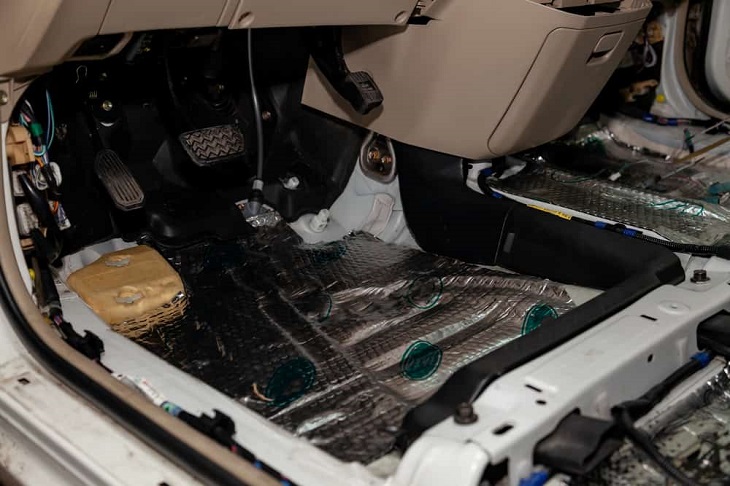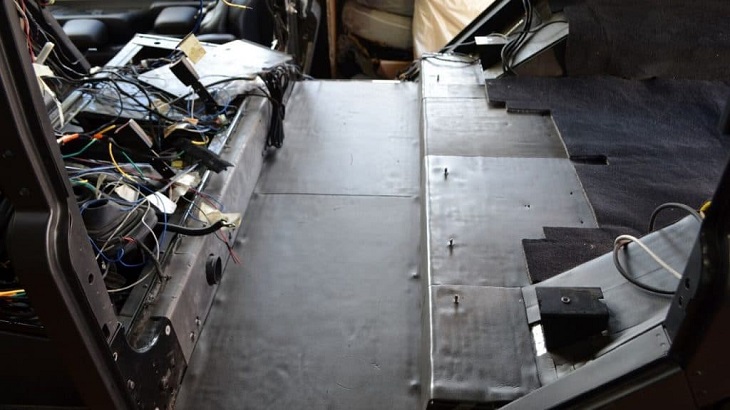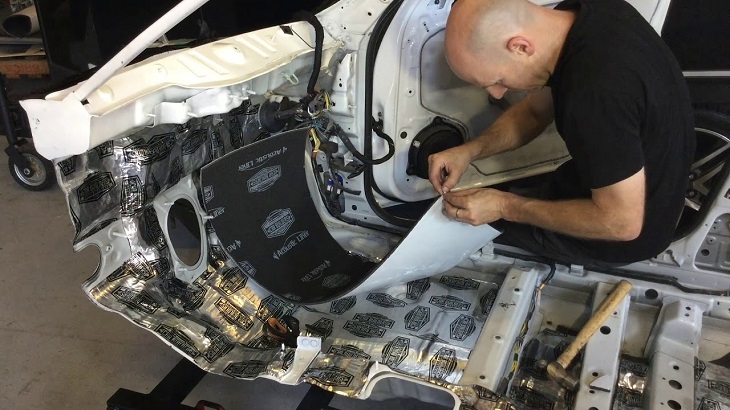Acoustic lining is used to reduce noise in a vehicle. This type of lining is found in the body and doors of all vehicles, whether they are petrol or diesel-powered. The lining prevents engine noise and exhaust fumes from entering the cabin. The noise reduction material is either glued to the door or fitted with screws. The material can be located on the inside of the vehicle’s door, within the door shell.
This specific type of soundproofing material has to be lightweight, thin and thermally efficient. In addition to that, it also needs to offer some impact resistance, as it will be installed in areas where things can occasionally hit it. The most common types of acoustic lining are made from materials like glass fibre, mineral wool, bitumen and foam.
How to Soundproof the Inside of a Car

All cars produce noise, and most of that noise is unwelcome. Car manufacturers often use sound-deadening materials to reduce the amount of noise inside a vehicle. With typically 50% of road noise coming through the floor and 30% through the firewall, there are several areas you can treat to reduce engine, exhaust and road noise.
Most modern vehicles have some form of acoustic insulation fitted to reduce interior noise levels through the use of sound-deadening materials. The materials used in the manufacture of these underlays are designed to absorb sound waves, which reduces their intensity before they reach your ears.
The automotive industry is constantly looking for better ways to reduce engine and road noise in cars and vans. Most modern vehicles have many layers of acoustic material used throughout the car in an attempt to improve sound quality for passengers. Deadening or damping material absorbs sound energy before it reaches your ear, so it does not affect how loud the engine actually is, but it does change how loud it sounds inside your vehicle.
Types
Each type has advantages and disadvantages, so it’s important to consider the purpose of the lining before choosing a material:
Glass fibre is the oldest type of acoustic lining for cars, and it is still used today, but it is not nearly as popular as it used to be. The main reason for this is that glass fibre can easily be damaged by heat, water and impacts. Compared to modern types of this type of lining, glass fibre is relatively difficult to install and expensive.
Mineral wool is another commonly used type. It has good properties in terms of impact resistance, thermal efficiency and sound absorption, but it can easily be damaged by water. Bitumen based products are similar to mineral wool, but they are not quite as thermally efficient nor do they offer the same level of impact resistance or sound absorption.
Foam based products are usually considered the best choice because they have all the right properties. They are very lightweight, thermally efficient and easy to install, which makes them a perfect choice for DIY enthusiasts. Foam based products offer excellent impact resistance, sound absorption and thermal efficiency while also being completely anti-corrosive, which means that they won’t be affected by moisture or other elements if installed correctly.
Carpeting in Cars

A car interior’s carpeting is designed for looks and comfort more than anything else. It can also help keep the overall sound of the vehicle down by absorbing some noise from the inside of the car. Carpeting can also provide some insulation against heat or cold from outside the vehicle. There are two types of carpeting in cars: the carpet that covers the floor and acts as a sound deadener (this is generally the thicker carpet) and the carpet that lines the interior, such as the trunk and kick panels (this is usually a thinner carpet that is easier to work with).
Cleaning Carpets and Mats
The carpeting in cars gets dirty quickly and may need frequent cleaning. Most vacuums are large enough to clean a car’s interior, but they do not get into tight or narrow spaces like a portable vacuum cleaner might. Some car manufacturers sell portable vacuums that fit into smaller places than a normal vacuum cleaner could, such as under seats or between consoles.
The Importance of Sound Deadening: How it Benefits Your Car

Once one of the most popular and sought-after modifications, sound deadening is often overlooked by today’s car enthusiasts. But for those who are in the know, a good set of sound deadening mats is just as beneficial as ever. By going over your vehicle with some sort of noise dampening material, you can make your car much quieter. How quiet? It can reduce interior road noise by up to 80 per cent – that’s a lot quieter!
Sound deadening is a crucial aspect to consider when building a high-performance car. The reduction of unwanted noise allows you to hear what’s important – like engine noises that you need to hear, or music from your stereo system. It doesn’t matter if you’re building a pro touring, pro street, or pro dragster – sound deadening will help you get the best out of your build.


















